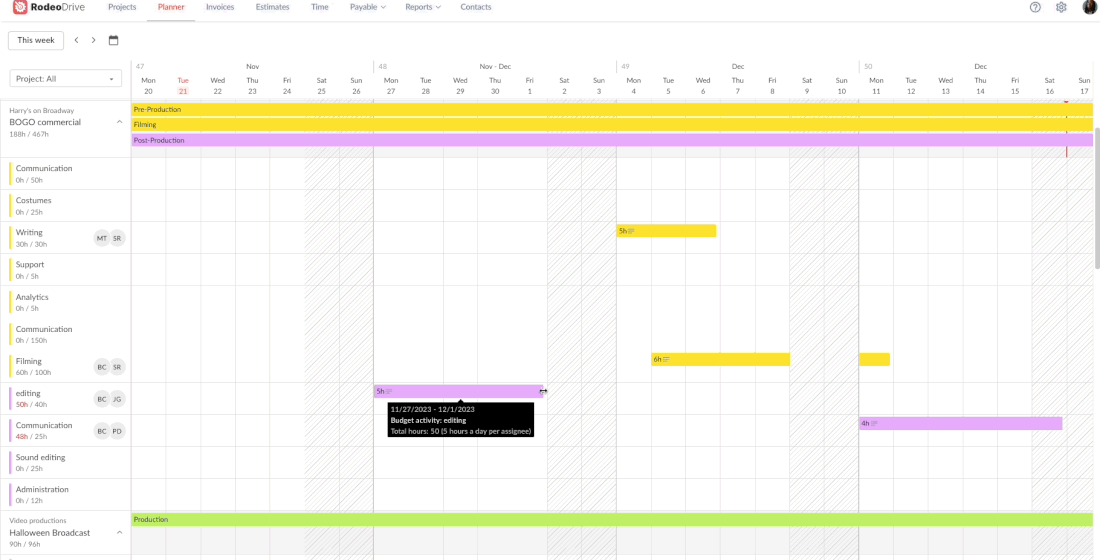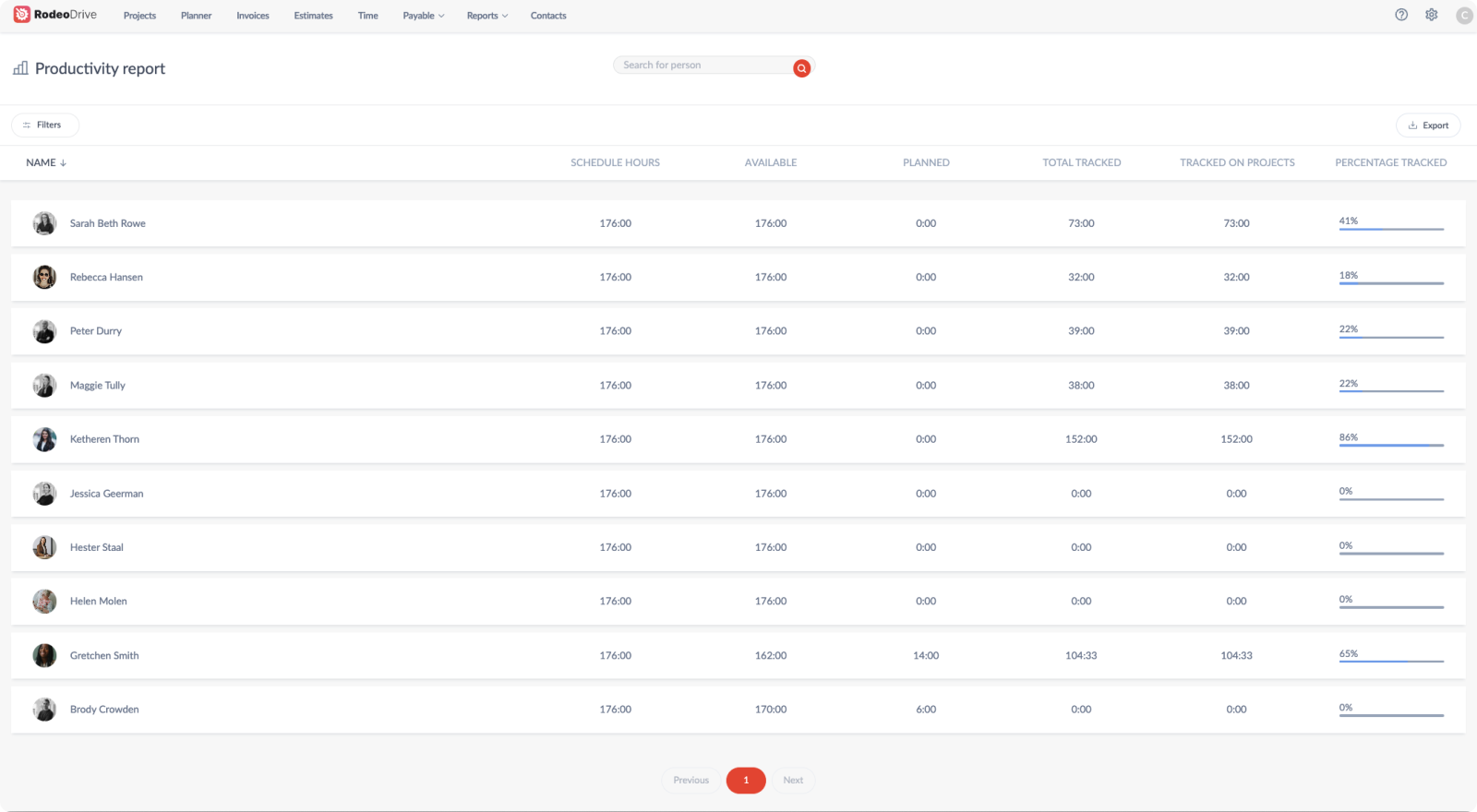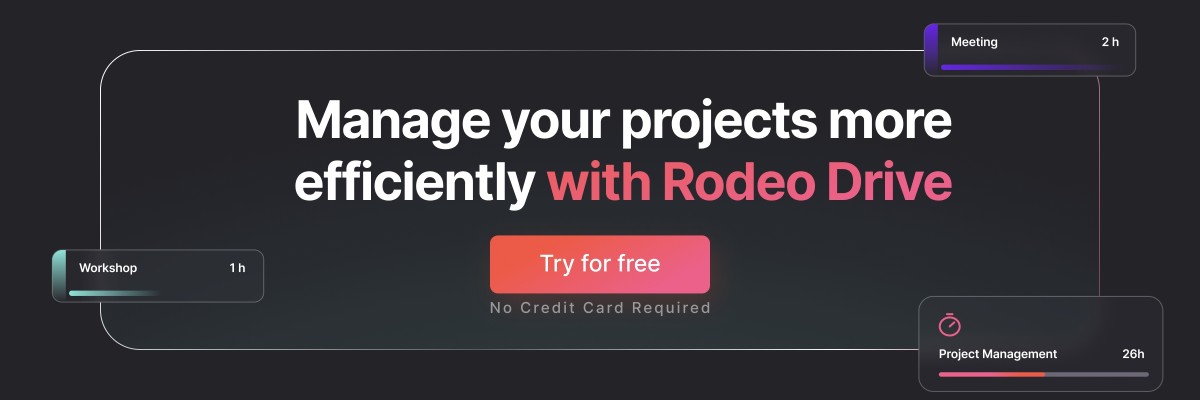The Ultimate Guide for Creative Project Management in 2024
Behind every commercial, animation, or other creative work is a plan of action that made it happen. That framework is set up and safely guarded by a creative project manager.
To help PMs deliver projects successfully without stress and frustration, we’ve put together this easy-to-follow guide for creative project management.
What is creative project management?
Creative project management ensures the successful delivery of creative projects. Before that final phase, PMs handle the briefs, coordinate tasks, track progress, define project milestones, and sometimes interact with clients.
Since projects are temporary and have a set beginning and end, project management sets up the structure and guidelines. All the steps are very hands-on, and managers might have to deal with high expectations, a tight budget, and a looming deadline. Creative PMs keep the big picture in mind while ensuring all milestones are met.
But why does project management in the creative industry differ from other sectors? For starters, timelines might not always be chronological and can have several dependencies, especially if you are working with another agency or vendor. The deliverables aren’t static objects; they are expressions of creativity and carry emotion or require an explanation when presenting the final product.
The day-to-day of a creative project manager consists of guiding various creative processes. Don’t forget about the actual managing aspect of the job. Your project might know some time restraints, and you will have to come up with creative solutions.
With this guide, you’ll see the bigger picture of the project by creating a structure for yourself, your team, and the client and completing the lifecycle of your project.
Related: The Ultimate Guide to Managing Projects Effectively
Coordinating a team in-house
If you are coordinating an in-house creative team, there is a good chance you have a deep knowledge of the business, company culture, and aspirations. As a consequence, all of the work has a single focus.
In this role, you will have to be aware of capacity, internal responsibilities, and communication styles within the team. See the colleague or department who initiated the project as an external stakeholder and provide them with updates along the way.
A big difference from working with external clients is communication, especially when you work in the same building or floor. The manager might stop by to ask for a quick update. Keep the project updates structured by planning meetings and have the data ready. Don’t feel tempted by distractions or demands that can derail your project.
Related: How to Create a Winning Marketing Project Plan

Working at an agency
In an agency setting, you juggle various projects and manage different clients’ expectations. You might wake up with multiple timelines racing through your head. Good chance the projects have different audiences and objectives.
There are multiple project statuses and timelines that you will be exposed to daily, so you will have a much broader instead of an in-depth understanding of project topics than working in-house.
The key to running multiple projects is to get to the core of what clients need and perhaps instead of want during an onboarding session. This method depends on transparent information sharing. You should be able to ask the client anything – and vice-versa.
After this session, you summarize what the client does, their needs, and how they operate. Look at this document from time to time to see if the deliverables still match the conditions.
Also read: How to Effectively Manage Marketing Campaigns
Who’s involved
You might work with multiple teams and vendors for your in-house creative projects. They all report to you and your organization. If you work for various agency clients, their wishes and expectations might not be theirs but their clients’. Something to keep in mind before you make the team briefing.
Related: Product Manager vs. Project Manager: Understanding the Differences
The creative project management process
Creativity can be subjective; your project cannot. The creative project management process knows different lifecycle stages, so use the following stages as a guideline and break down your plan into achievable milestones.
Phase #0: Before the project kicks off
From the initial contact to the actual client request, there are usually several stages before the official project brief. The initiation phase is all about identifying the requirements for the creative deliverables.
Together with the client, the scope of the project is defined. This process needs coordination by a creative project manager to ensure a feasible plan comes together. Team members can have their own interpretation of the scope. Therefore, it’s essential to get everyone on the same page.
The scope should describe the client's objectives and entails deliverables, milestones, budget, and timeline. Include how you track progress and communicate updates.
Related: How to Write a Persuasive Project Proposal
Pick a software tool
Phew, there’s a solution for you to do it all. Each company has its way of tracking project progress and productivity. Finding a tool that meets your needs and matches the company's policy is vital. Using a tool balances creativity and business objectives. While a project timeline seems abstract, the actual work doesn’t have to be. Each team has its own needs for a project management platform, so you’d want to look for a flexible solution.
Rodeo Drive is an intuitive project management software solution specially designed for creative agencies. You can cover the complete creative project management process in one centralized manner.
Not everyone is tech-savvy. You might need to onboard people while the project is already underway. Invest in an intuitive tool like Rodeo Drive that makes life easier for you and your (future) teammates.
Also read: 18 Best Project Management Software for Creative Agencies
Phase #1: Preparing and budgeting
The project kicks off as soon as the team and client agree on the estimated budget, deliverables, and goals.
A department or colleague is your ‘client’ if you work in-house. At this stage, your team starts preparing for the project ahead. A big chunk of your time should be spent on budgeting. If the company thrives financially, so do your current and future projects. A detailed breakdown of the budget should include billable hours and other expenses.
Once your budget is approved, you can send your estimate straight to the client with Rodeo Drive and use the planner to outline all tasks and activities.
How to define your budget
Collecting all the budget details upfront will avoid uncomfortable situations where you have to ask for more money.
The definition of a project budget is the total cost of all the hours plus supplies.
Here is a breakdown of what can be included in your budget:
-
Billable and non-billable hours
Whether you work with freelancers or in-house staff, they need to get paid. You can calculate the number of hours dedicated to each task per person or work with a flat fee agreed upon internally and with the client. Keep a close watch on non-billable hours as they represent all your work but can’t be expensed to the client. Think of all-hands meetings, training sessions, and entertaining clients. -
Transport
Travel or logistic expenses. For example, when you have a video shoot planned, you’d need personnel and props to arrive on set safely. Include packaging materials and car rental in this category. -
Supplies
Add all the equipment, software, hardware, and other materials to this grouping. It doesn’t hurt to shop around and ask for discounts if you have similar projects coming up.
You can use two ways of estimating your project budget; top-down or bottom-up budgeting.
-
Top-down budgeting
In this case, you already have a total amount for the complete project agreed upon by the client. It’s your job to break it down into tasks and activities with accompanying costs. -
Bottom-up budgeting
Once you’ve broken down the project and determined the cost for each task and activity, add it all up and conclude the total project budget - ready for sign-off.
Feeling dizzy seeing all the numbers on your calculator? Rodeo Drive's budgeting feature is structured to help creative project managers calculate the costs and help plan time activities. While planning tasks and setting up deadlines in Rodeo Drive, you will discover that project tasks correlate to a budgeted activity, helping you to manage productivity and budget in one.

Phase #2: Planning, resources, and task management
The second phase defines tasks and assigns the work to team members with a suitable skill set. Get your colleagues on the same page by providing a structured approach and identifying milestones to keep the focus on the horizon. You could use Rodeo Drive’s tried and tested framework as your guide.
A project timeline will help you manage tasks. The visualization will show the deliverables and the activities required. This format allows for sharing with stakeholders, management, or your client. This information should be included in your project timeline:
- All the tasks
- Deadlines
- Estimated duration
- Dependencies
- Employees assigned to each task
Resources
Capacity planning goes beyond checking who’s available. Build your team and assess their strengths and weaknesses to get the best result. Using a software tool like Rodeo Drive will make this stage a lot easier.

Planning a visual timeline allows team members to address any allocation issues before production.
Task management
The beating heart of your projects are the actual tasks. Collaborate with your team in a straightforward manner and make sure to add a description of each task.
If it’s a shoot, you’d want to include the address, mode of transport, call sheet, and other relevant bits of information. Indicate the status and priority of each task to keep the project flowing smoothly.
Set measurable goals for your team
You balance creativity and productivity every day. Tasks bundled together make up a milestone or target. By setting measurable goals, you keep everyone on top of their game. Be transparent about project goals, personal goals, and milestones but avoid micromanaging.
There are multiple methods you can implement:
-
SMART
SMART goals are defined as Specific, Measurable, Attainable, Relevant, and Time-based. These criteria help you formulate a realistic target, create a timeline, and identify vital parts of your project and what can be scrapped. The framework helps you to create a realistic plan with achievable deliverables.
-
OKRs
Goals and objectives are not the same. OKRs stands for Objectives and Key Results.
The goal is the desired outcome of the project. For example: improve traffic on the client’s landing page by 20%. The objectives are subgoals that move the client in the right direction, like your landing page redesign project.

You can use this framework for your project to bring a unified understanding of the outcome. Invite your team members to define success criteria for the project, professionally and personally.
Phase #3: Execution and regular check-ins
Your project comes alive during the execution phase. Create transparency in the workload if clients ask for an update. Keep track of billable and non-billable hours and decide if you have enough resources for the tasks ahead.
The team might discover dependencies or delays. Don’t stress; this is part of the process. Organize regular check-in meetings and discuss upcoming tasks and roadblocks.
Resolve issues quickly and make everyone feel heard.
Monitor quality
Delivering high-quality work is the deepest desire of your client. You can provide a range of services and work really fast, but the project will fall apart if you can’t deliver great quality. Keep an eye on growing the business and check in on the quality before hitting a milestone.
Check-in on the goals
Teamwork is one of the most crucial parameters for success. Apply the team’s input and upgrade your process if it helps drive the team forward with the project goal and their own professional or personal development.
Avoid scope creep
When the work required begins to increase, you should be aware it’s not causing scope creep. Extra billable hours or shifting timelines can cause frustration with your team. Use a time-tracking tool to identify if the hours allocated to a task are correct or need adjusting. Create transparency in everyone’s workload.
Phase #4: Wrap up, report and feedback
The final stage shouldn’t be overlooked as you will gain the most insights. You might be able to generate a template and use it for the next project waiting.
With many moving pieces going on at once, it can be hard to keep track of productivity and profitability. It’s even harder to look at comments and notes in retrospect. Rodeo Drive’s reporting feature will offer you that 360 view of past and present projects.
Benefit from real-time reporting
Real-time updates will provide you with the profitability of each project. Discover how activities influence the budget and decide if you need to cut costs.
Productivity
Obtaining reasonable time management for employees is vital for a healthy and happy company. The team allocates hours to their job, Rodeo Drive keeps track of how productive they are and who has the capacity to pick up one more deliverable.

Learn from project data
Rodeo Drive's projects report will give you the full overview of your terminated projects including productivity, costs, margins, and profitability. Use these insights to optimize budgets and forecast future workloads and timelines. It’s also valuable to see which projects are making the company the highest profit.
You also have the option to filter this report to only display your closed projects or your work-in-progress projects. Having the option to examine the results of past projects can help you improve your processes and evaluate whether future similar projects are worth your time.

Once the project is complete, keep it on your radar and offer any support to your teammates and clients. Carry out a review to gather feedback. You can do this internally to improve future processes or externally with the client if you can benefit from their analysis.
After a few weeks, check to see if there are any loose ends by sending a friendly email to all involved.
About the creative project manager
Creative project managers oversee the process of video professionals, marketers, designers, and other creative folks. They often are engaged in the complete process from project brief to idea, sketch, execution, and wrap-up. The responsibilities consist of tangible elements like budgeting and planning, as well as leadership, support, and organizing.
The title might not always be on the business card. The title applies to anyone finding themselves managing projects and processes.
How do I become a creative project manager?
There are no specific academic courses for creative project managers. You will benefit from a degree in a creative discipline such as marketing, graphic design, or art. A business course helps you to understand the inner workings of a company.
Before you start applying for a creative project manager position, write down your traits and analyze how you can utilize them for the job. During the interview, elaborate on examples and situations where you wore a PM’s hat.
You will learn a lot on the job. Familiarize yourself with the company’s processes and procedures and take a course in the software used.
A project manager overseeing creative people will have to lead with empathy for the creative process. Find a balance between optimizing productivity and fostering talent without being pushy.
It will be your job to manage the whole process, and people will likely come to you with issues, missed deadlines, or other complicated matters. Master the jobs with the following tips:
Talk the talk: industry knowledge
Knowing what’s going on in the industry makes you a credible manager. Knowing which resources to use or freelancers to contact saves time. Learn the abbreviations used in your field and ask your team for good reading material. Understanding the basics of the various jobs involved will equip you with better resource and planning skills.
Related: What Does Project Management For Creatives Look Like?
Get familiar with tools
Organization protects the team from an unrealistic workload and prevents the projects from going over budget or missing deadlines. Creative project management software such as Rodeo Drive lets you cut out the noise and provides you with an accurate overview of the progress whenever you need it.
Also read: 15 Marketing Agency Software To Use
Understand the creative process
If you are a creative yourself, it will help you understand team members’ responsibilities and skills. If you don’t have a creative background, immerse yourself in resources that will help you develop a deep understanding of the nuances and requirements. By doing this, you know exactly what to ask during the initial phase in order to set your project up for success.
Speak the language. This translates to task specifications that are helpful and make your briefs concise. By doing so, it will become easier to oversee the progress and stay on top of milestones.
Creative project manager skills
The job requires a high level of relationship-building and engagement. Much of your time is involved in interacting with people. They might see you as the main point of contact and expect fast answers. You can’t make everyone happy, but you will likely be excused when you show an effort. The following skills can help you excel on the job:

Also read: The 26 Key Project Management Skills for Success
Critical-thinking and problem-solving
Be proactive rather than reactive to navigate through ambiguous situations. Remain objective, analyze, and evaluate throughout every phase.
Everyone has a bias. Critical thinking allows you to separate facts from opinions and wishful thinking in project management. If you understand the situation better, you will likely find a faster solution while reducing stress. Apply this method during brainstorming and meetings and facilitate comprehensive discussions.
Show leadership and take initiative
By guiding and motivating the people involved, you help the project forward and are likely to enjoy a positive result. Help your team feel influential by providing feedback, setting and discussing goals, and evaluating performance. Make this process transparent and invite people to give you feedback as well. Combine these elements, develop your leadership skills and define your style.
Live and breathe your project
The creative project might not be your actual baby, but treat it like one. Some tasks are more important than others. Familiarize yourself with the workflows of the team so you can decide on the priorities.
Risk management
Identifying potential risks that can derail your project makes you ready for anything. Develop mitigation strategies that can help you be more at ease when it happens. Acknowledge what the impact can be, positive or negative, and plan ahead to avoid issues.
Clear communication
Working in the creative industry can have its quirks. Leading a team requires a social savvy radar. Active listening helps to completely understand the message. By making a conscious effort, you can become more aware of the state of the team and project. Avoid being distracted while listening to someone and pay attention to body language.
Interpersonal skills
You must communicate well and learn how to deal with different personalities. Being a creative project manager makes you the middleman between the client and the team. There might be situations where you have to mediate between them. Try to approach the problem with facts and empathize with all parties involved.
Takeaway
There is no doubt that you, a creative project manager, can do it all. The power lies in leading projects with transparency and simplicity with a bit of help from a software tool.
Look for a solution beyond the basic planning features that allow you to manage everything from estimating, budgeting, resource management, and reporting.
Try Rodeo Drive out for yourself! We’re offering a free plan so you can explore all our features without a commitment.
--
Originally published on June 8, 2022, updated on Dec 30, 2022.







